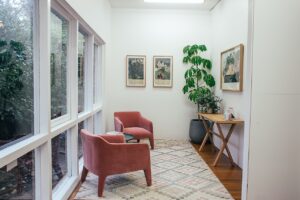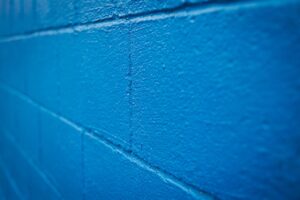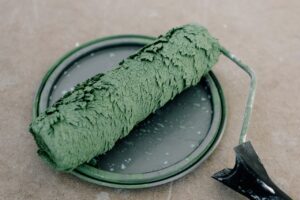
Unlocking The Power Of Colors: Interior Aesthetic Painting Explained
The potency of colors is profound. Have you ever contemplated the remarkable ability of the right blend of shades to entirely metamorphose a room’s ambiance and emotional tone? The realm of interior aesthetic painting has emerged to unlock colors’ authentic potential and enhance the visual allure of your dwelling. By tapping into the psychology of colors, interior aesthetic painting escorts your living spaces through an exhilarating odyssey across a spectrum of lively hues. It extends beyond mere color infusion; it involves crafting an encounter that harmonizes with your individuality and panache. From calming pastels that conjure a tranquil milieu to daring tones that assert a presence, this artistic methodology amplifies the finest attributes in each nook of your habitation. Thus, if you stand prepared to commence a thrilling voyage where colors assume a central role, fasten your seatbelt and prepare to delve into the marvels of interior aesthetic painting. Let us plunge into this captivating domain where colors wield the authority to transmute any dwelling into an enchanting domicile. Examining The Psychology Of Color In Interior Design The impact of colors on our emotions and their capacity to shape distinct atmospheres within a given area is truly remarkable. In the realm of interior design, a deep comprehension of color psychology stands as a vital key to unlocking the potential of hues and constructing a visually appealing environment. Let’s delve into the profound influence that diverse colors wield over our moods and overall encounters. Individual colors evoke a wide spectrum of emotions and exert psychological influences on people. Each hue possesses its own distinctive character, capable of eliciting precise emotional reactions. Take, for example, warm colors like red and orange, which often engender a welcoming and spirited ambiance. These tones are frequently linked with ardor, zeal, and warmth. They prove particularly suitable for spaces designed for social interaction or high-energy engagements, such as living rooms or play areas. Conversely, cool colors like blue and green encourage serenity and repose. These shades are renowned for their calming attributes, contributing to tranquil atmospheres in bedrooms or meditation corners. Blue is frequently correlated with serenity and trust, while green symbolizes harmony and the natural world. Neutral shades, such as beige and gray, bring forth a sense of equilibrium and refinement. These adaptable colors serve as splendid backdrops, allowing other elements within the space to shine. Beige imparts warmth without overwhelming the surroundings, whereas gray introduces elegance while maintaining a neutral disposition. Many interior designers gravitate towards neutral tones when crafting office spaces or zones demanding focused attention. The Color Wheel: Primary Colors, Secondary Colors, And Beyond To gain a comprehensive grasp of how colors interact, referring to the color wheel proves invaluable—a tool harnessed by designers to fathom color relationships. Primary colors—red, blue, and yellow—constitute the fundamental building blocks from which all other colors stem. Blending these primary hues begets secondary colors such as purple (blue + red), green (blue + yellow), and orange (red + yellow). Each amalgamation yields its own distinct shade, accompanied by its unique psychological influences. Researchers have ascertained that particular colors wield the ability to impact our cognitive faculties and conduct. For instance, blue has been observed to heighten productivity, rendering it a fitting choice for office spaces or study areas. On the other hand, yellow stimulates creativity and is frequently employed in art studios or classrooms to kindle students’ inspiration. The Potency Of Color In Metamorphosing A Room’s Ambiance By judiciously integrating various colors into your interior design concept, you hold the power to profoundly transfigure a room’s aura and appearance. Grasping the psychological sway of colors stands as a pivotal element. Here are several means by which color can be employed: Accent walls: Coating one wall with a striking color can establish a central point of interest, infusing visual allure into a space. Vivid furniture: Introducing dynamic furniture pieces can inject character into a room, harmonizing with the overall color palette. Ornaments and textiles: Encompassing colorful ornaments like throw pillows, rugs, or drapes can infuse dashes of color without inundating the area. Play with textures: Distinct materials reflect light in varied ways, influencing how colors manifest within a room. Experimenting with glossy surfaces versus matte finishes can reshape the perception of color within a space. Exploring The Emotional Resonance Of Abstract Art The realm of abstract art offers a captivating avenue for artistic expression, wielding the potency of colors, shapes, and forms to convey sentiments devoid of recognizable objects. This distinctive mode empowers artists to craft visual symphonies that elicit precise emotions and atmospheres in their audience. By delving into the emotional reverberations of abstract art, we unveil a realm of aesthetic possibilities that enrich the canvas of interior design. Abstract art frequently boasts audacious and vibrant colors as its hallmark. These chromatic spectrums possess the ability to awaken profound sentiments within us. Consider, for instance, the fiery reds and fervent oranges that can kindle excitement or rouse passion. When employed judiciously in the realm of interior design, these vivid hues infuse spaces with vigor, birthing an ambiance teeming with vitality. In contrast, the gentle pastel shades gracing abstract masterpieces exert a soothing influence on our psyche. Serene blues, tender pinks, and tranquil greens orchestrate an aura of calmness and placidity within a room. The incorporation of these hues into the interior aesthetic through abstract art can serve to nurture an environment that fosters repose and tranquility. The versatility inherent in abstract art stands as one of its most remarkable attributes. Each beholder arrives with their own distinct experiences and viewpoints, facilitating a personalized connection with the artwork. This very trait renders abstract art an impeccable selection across diverse interior styles, seamlessly adapting to assorted themes and concepts. For instance: In the realm of minimalist interiors: Abstract art featuring clean lines and geometric configurations can harmonize with the austerity and streamlined elegance emblematic of minimalist design. In spaces inspired by bohemian flair: Abstract paintings characterized by bold brushwork and dynamic color palettes can elevate the eclectic









